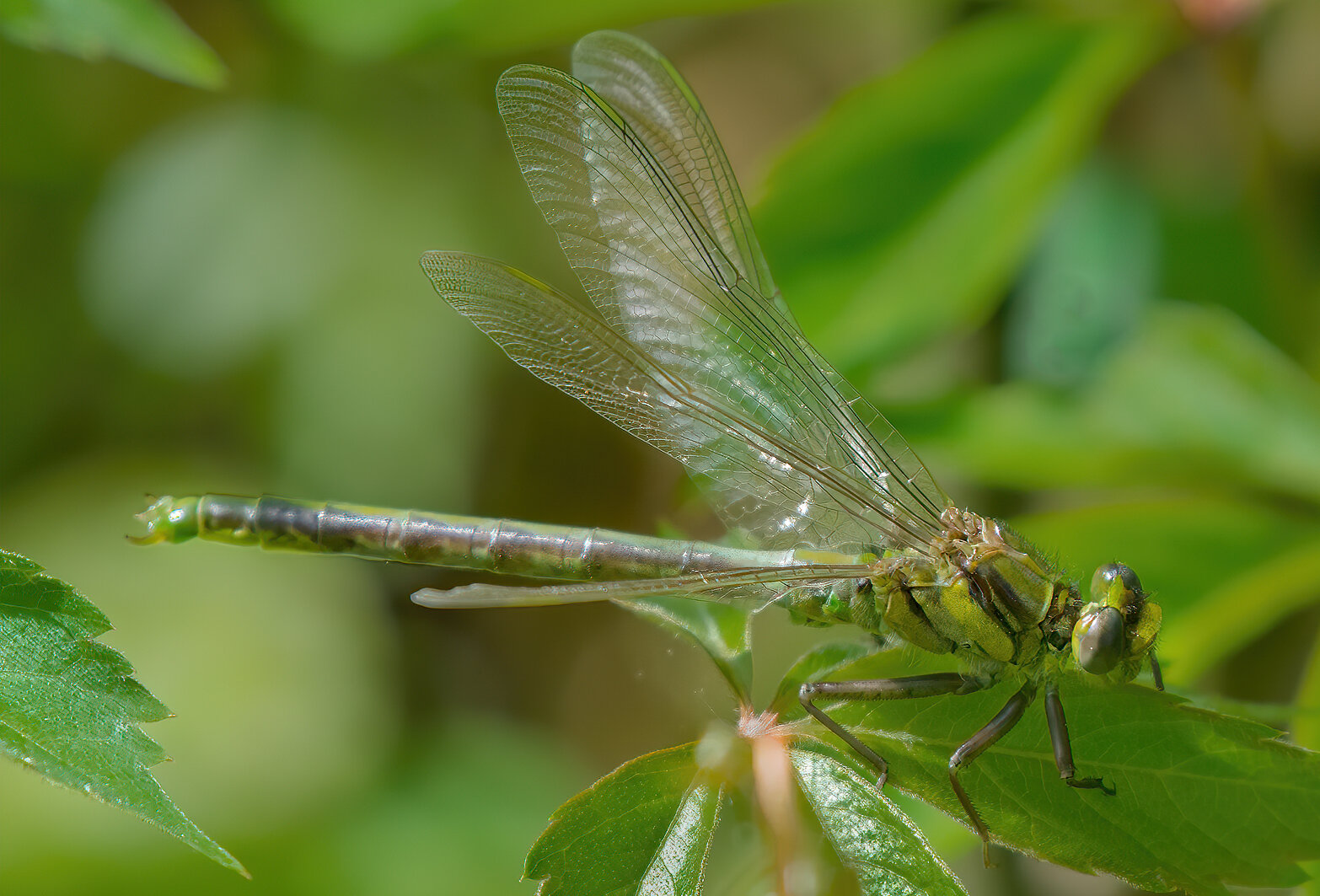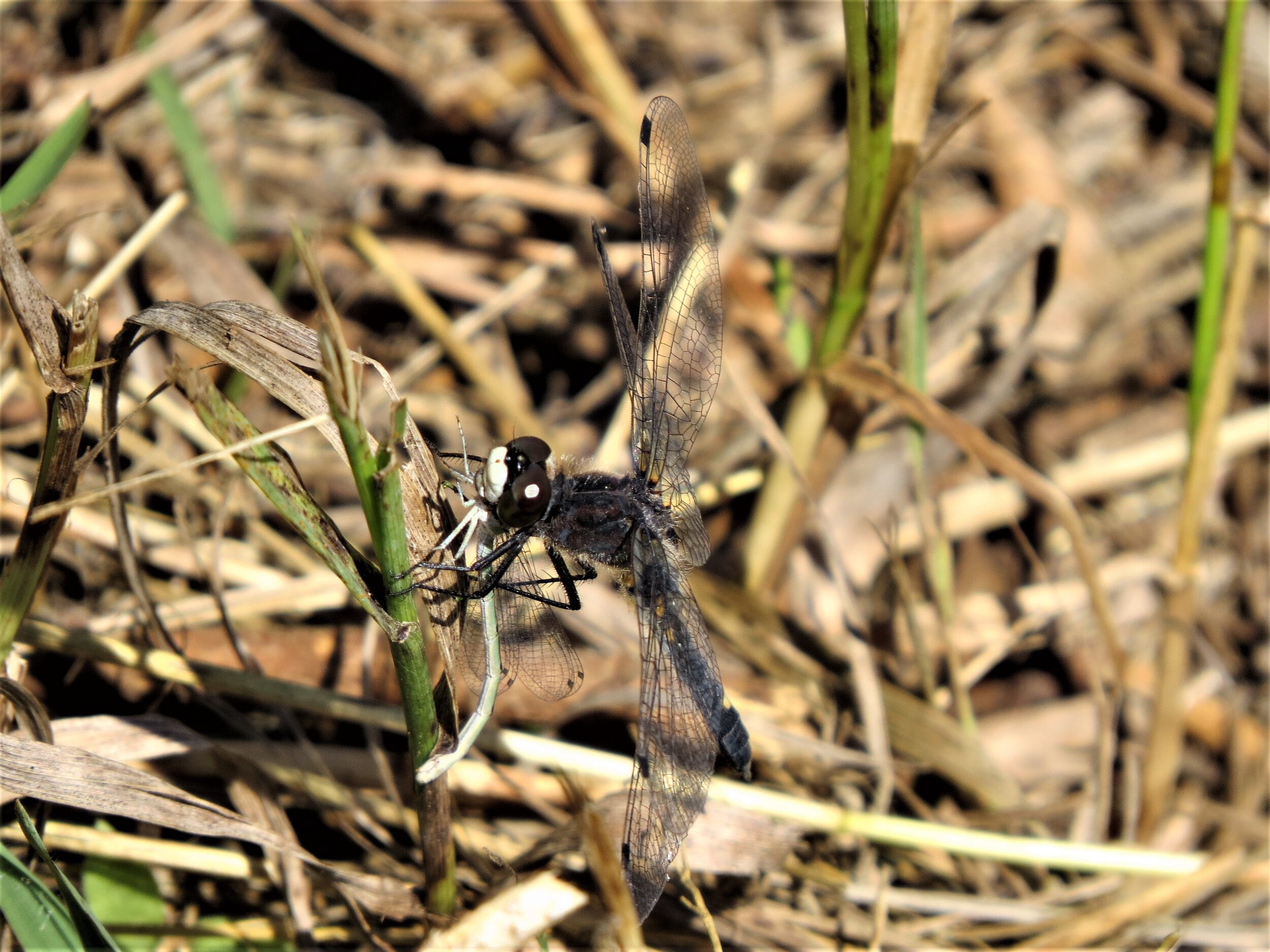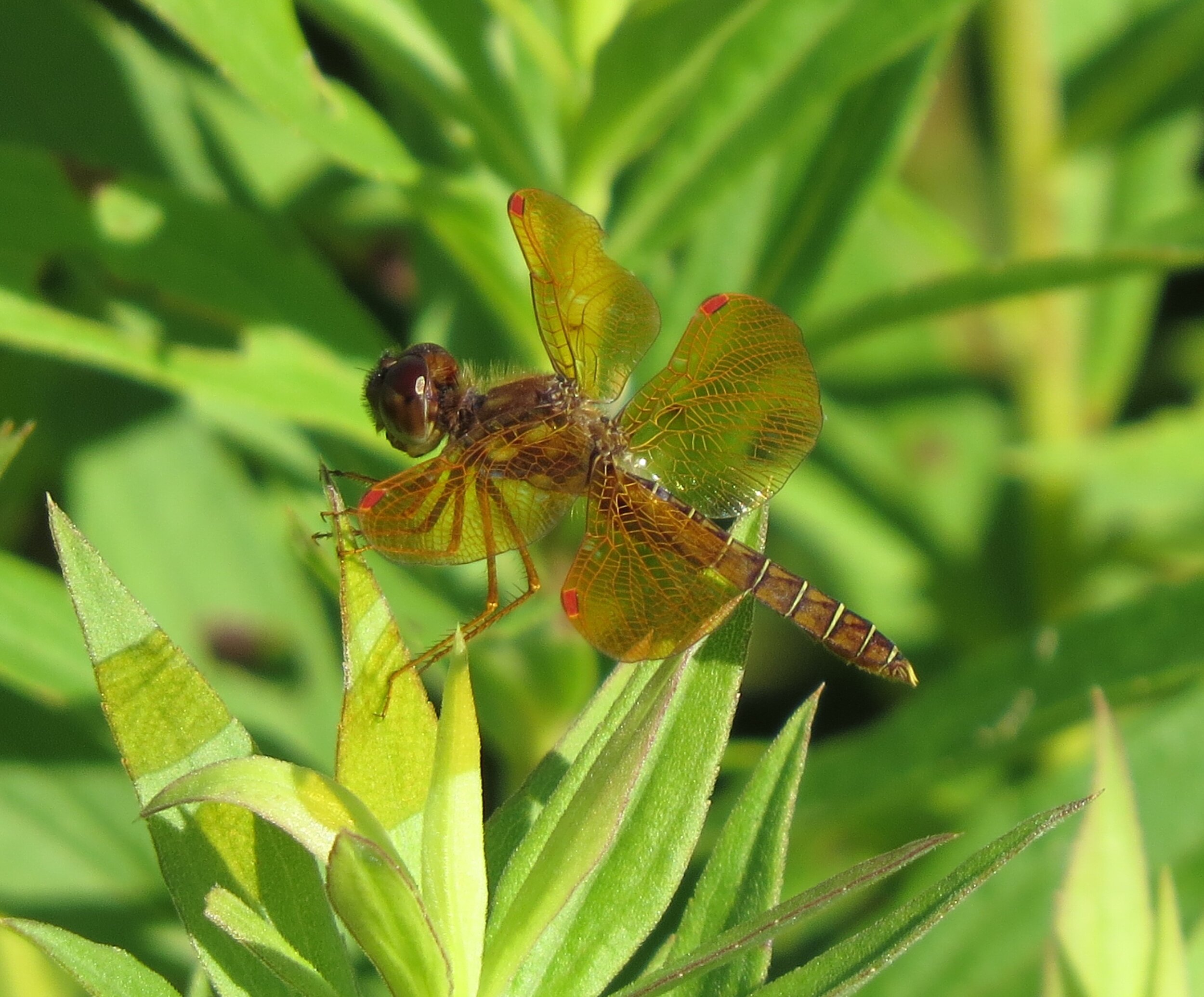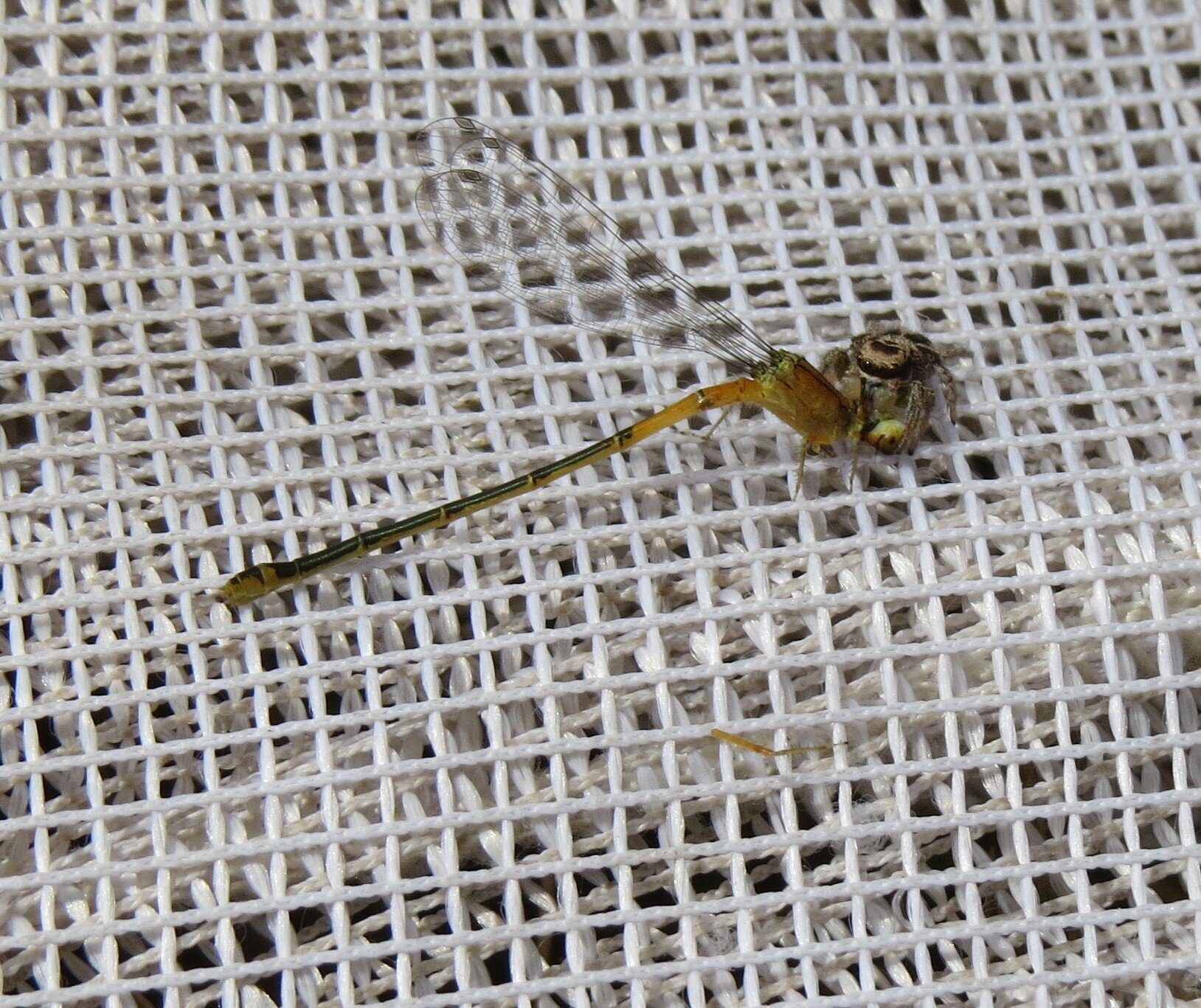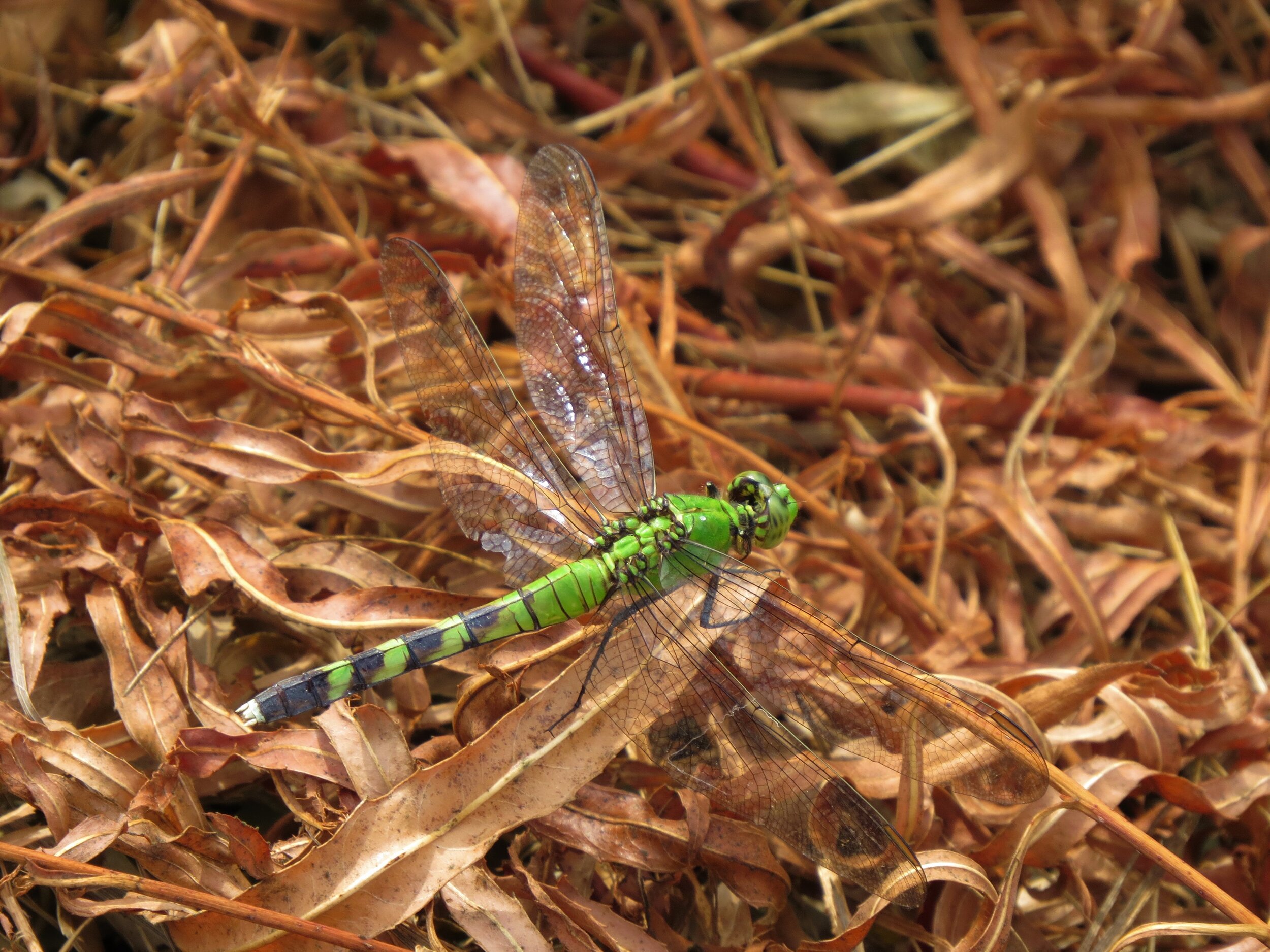Odonata Survey 2020 - South Central Wisconsin
Graham Steinhauer wrote a blog on July 22, 2020 requesting volunteers to assist with an odonata (dragonflies and damselflies) survey on properties that Madison Audubon has an interest in. The post includes tactics for hunting odonates and advice on where to find them.
We decided to conduct baseline monitoring at Goose Pond Sanctuary, Otsego Marsh, Erstad Prairie and the adjacent Schoeneberg Marsh Waterfowl Production Area, and at the Martin’s Wildland property near Rio where Madison Audubon holds a conservation easement. Odonates are rewarding to look for because they're active critters, have vibrant colors, are easily found, and there are many species. They are habitat restricted, and we think it’s important to know what species are present on our properties. When Goose Pond goes dry in future drought times, it will be interesting to monitor odonates and record what species are present and how long they take to return. Goose Pond was bone dry in the drought of 2012.
Another reason to conduct the survey was to assist the DNR and the Wisconsin Dragonfly Society who are conducting an odonata survey to update odonata records for the state.
Dan Jackson, an odonata specialist and record reviewer for the WI Odonata Survey, wrote to us, “As you can see by the previous sighting dates, Columbia County is very under-surveyed. It is great to see some effort under way and I would love to have these sightings input into the Wisconsin Odonata Survey (WOS) and Odonata Central (OC) with pictures so that I can vet them and get current dates recorded! That is especially true for the Halloween Pennant, Familiar Bluet, and Black Meadowhawk reports since there aren’t any or aren’t any modern sightings of those species.” On August 18th, 2020 Dan presented a virtual odonate program as a Madison Audubon monthly meeting.
Note, the text below was updated on Feb. 11 to include a new species addition that was identified by Dan Jackson over the weekend, the skimming bluet (a new county record).
There are 75 species of odonates on the Columbia County list, and we found 29 of them! Overall, 17 species of dragonflies and 12 species of damselflies were found. We were very pleased with the first year results even though we did not begin in earnest until around July 20th. In 2019 there were no Odonata observations for Columbia County. In 2020 there were 284 observations from 86 day entries. Around 90% of the observations were from our volunteers.
Jim Otto added the orange bluet and Richard Armstrong added the skimming bluet to the Columbia County Odonata species list. Richard also found the only horned clubtail dragonfly at Otsego Marsh, a species that has not been reported in Columbia County since 1996. We also found halloween pennants and familiar bluets that Dan hoped we would find.
Skimming bluet photo by Richard Armstrong
A horned clubtail photographed at Otsego Marsh by Richard Armstrong. Prior to this photo, the last time it was reported in Columbia County was in 1996
Richard Armstrong wrote, “Chasing and trying to photograph dragonflies is almost as crazy as trying to photograph warblers. Neither of them want to sit still.” We found that odonates are fast and wary and do not like to have their photos taken. Damselflies are very difficult to focus on and not easy to identify. Thanks to Dan Jackson for all his help with identifications, comments and advice on taking photos.
Jim Otto’s 2020 Odonata Adventures
During the summers of 2015-2019 I kept busy as a field volunteer for the second Wisconsin Breeding Bird Atlas (WBBA). The field work for WBBA is completed, so what to do during the socially distanced summer of 2020?
I was pleased to learn that Madison Audubon was beginning a two-year Odonata survey on and near their Columbia County properties. Beginning in early July, camera in hand, I hiked the Audubon properties searching for dragonflies and damselflies to photograph and identify. There was always something to see: prairie and wetland plants, birds, deer, butterflies, … plus MANY of the Odonates.
Jim Otto, Odonata hunter. Photo by Mark Martin
On my first trip to the Erstad Prairie, I found what has become my favorite dragonfly, the Eastern Pondhawk. The adult females and immature males have a wonderful kelly green and black color pattern, while the adult males are blue.
Another day at Erstad Prairie I had an insect net with me. I set the net down to look at something (I don’t recall what) with my binoculars. When I reached to pick up the net, I noticed that on the net was a spider holding an orange-colored damselfly: an immature Eastern Forktail (I have no idea what species the spider was.)
When I hiked the Schoeneberg Marsh paved trail that goes north from the Priem Road parking lot, I spotted a dragonfly that I did not recognize. It was flying back and forth over the trail, hunting I assume. I decided to wait for it to land so that I could take a photo. So, I waited, and waited, … and waited. It flew for more than twenty minutes before finally landing. I then got a couple of poor, but usable photos. This dragonfly was the only red saddlebags that I saw last year.
Come September, the number of “Odes” flying had dropped. By that time, I had found a total of 25 different species: 16 dragonflies and 9 damselflies. My best find was the orange bluet photographed at Erstad Prairie, a new species for Columbia County according to the Wisconsin Odonata Survey website. Not bad for a beginner like me! I look forward to seeing what other species will be flying in 2021.
Photos below by Jim Otto
Thanks to everyone that has been part of this survey. Please contact us at goosep@madisonaudubon.org if you would like to hunt for damsels and dragons this summer.
Richard Armstrong designed and created the Dragonflies of Madison Audubon’s Goose Pond Area poster. Additional surveyors that provided poster photos are JD Arnston, Mark Martin, Jim Otto, Linda Pils and Graham Steinhauer.
Written by Mark Martin and Susan-Foote Martin, Goose Pond Sanctuary residents managers, Graham Steinhauer, Goose Pond Sanctuary land steward, and Jim Otto, volunteer, with poster by Richard Armstrong, volunteer.
Cover photo by Jim Otto






